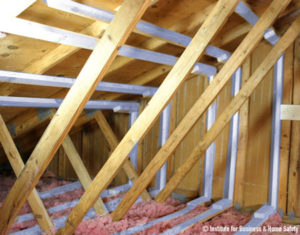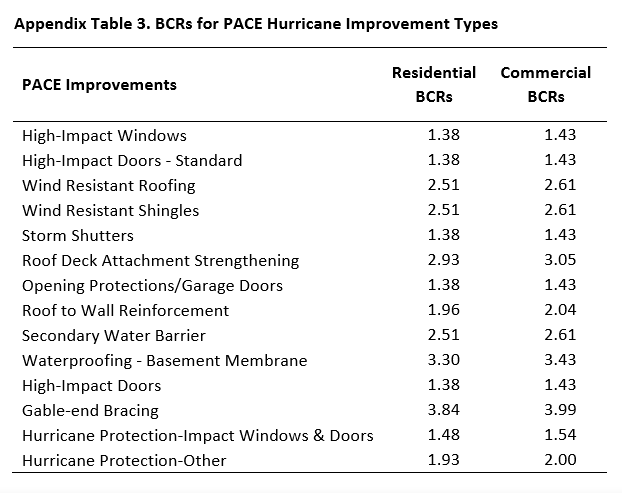PACE program working in Florida

Courtesy, Institute for Business & Home Safety
A program that’s all about resiliency here in Florida – as well as in California, and lately in Missouri – is the Property Assessed Clean Energy Program or PACE for short. A recent economic benefits study of the program not only revealed the economic impact the program is having on Florida, but also the money being spent on various hurricane hardening improvements to our homes and businesses and the money that’s being saved as a result.
PACE finances a wide range of energy and water efficiency, renewable energy, and hazard mitigation improvements permanently attached to residential and commercial properties. Established by state statutes and enabled by local governments, PACE financing, unlike traditional alternatives, is structured as an assessment to the property and not the property owner. PACE provides 100% of the cost of qualified structural improvements, which the property owner repays annually or semi-annually through a special assessment added to the property tax bill.
The study by the University of Southern California shows that in the six years since the program began in 2013, PACE has funded $401 million in improvements in Florida, with more than half (nearly $276 million) spent on hurricane mitigation. Building envelope energy efficiency, solar, and energy efficient windows and doors followed in funding.
The $276 million investment in hurricane mitigation improvements is estimated to have resulted in $507.8 million of avoided property damage and nearly $135 million in avoided temporary homeowner relocation costs. There are also insurance premium savings to consider. Researchers focused on PACE hurricane protection and structural reinforcement projects in Florida, since state law requires insurance companies to offer premium discounts to policy holders. After making the improvements, property owners would be able to receive insurance premium savings over the useful life of the projects, estimated on average at 20 years. The cumulative savings on insurance premiums are estimated to be $708 million.
With hurricane mitigation significantly outpacing the other, more energy-efficiency spending categories for PACE funds, researchers mapped specifics of hurricane resiliency into IBHS retrofitting categories as shown in the chart below. It takes the aggregate benefit-cost ratio (BCR) of 5:1 ($5 of benefit for every $1 dollar spent) and parcels it into the various home improvement types shown in the chart.

Source: Impacts of the Property Assessed Clean Energy (PACE) Program on the Economies of California and Florida, USC Sol Price School of Public Policy, March 2019
The big winners for residential and commercial property owners: installing gable-end bracing (a nearly 4-1 ratio of benefit to cost) and waterproofing via basement membrane (an over 3-1 ratio). Roof deck attachment strengthening and wind resistant roofing and shingles were also notable winners for property owners. We are all winners when we follow the principles of resiliency and put good public policy to work for Florida’s consumers!
The Florida legislature this year is considering HB 63 by Rep. Ray Rodrigues (R-Fort Myers), which would allow the use of PACE funds to get folks off septic tanks and connected to municipal sanitary sewer systems or to retrofit to an advanced onsite treatment system. An identical bill, SB 282, has been sponsored in the Senate by Senators Ben Albritton (R-Bartow) and Joe Gruters (R-Sarasota). See more in this edition’s Bill Watch.
LMA Newsletter of 3-11-19

